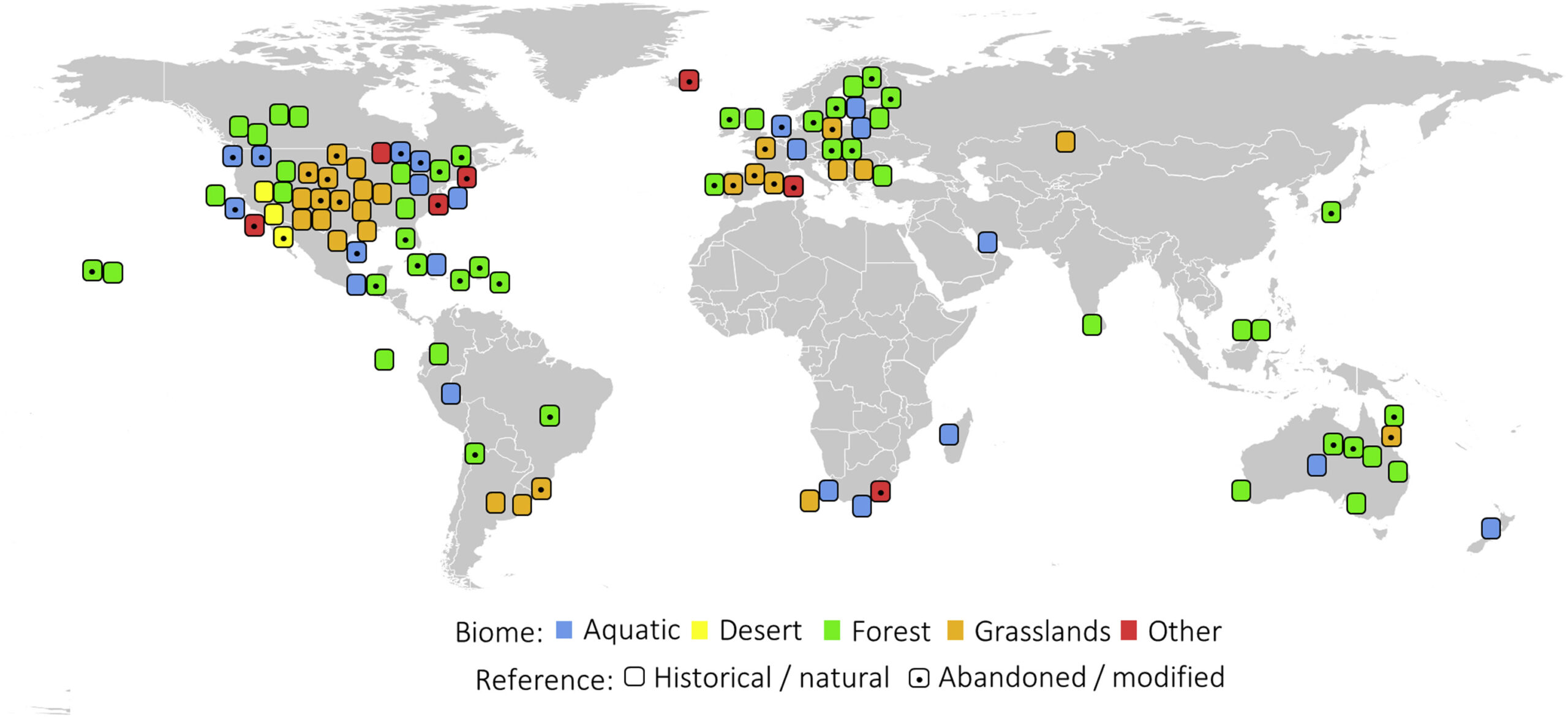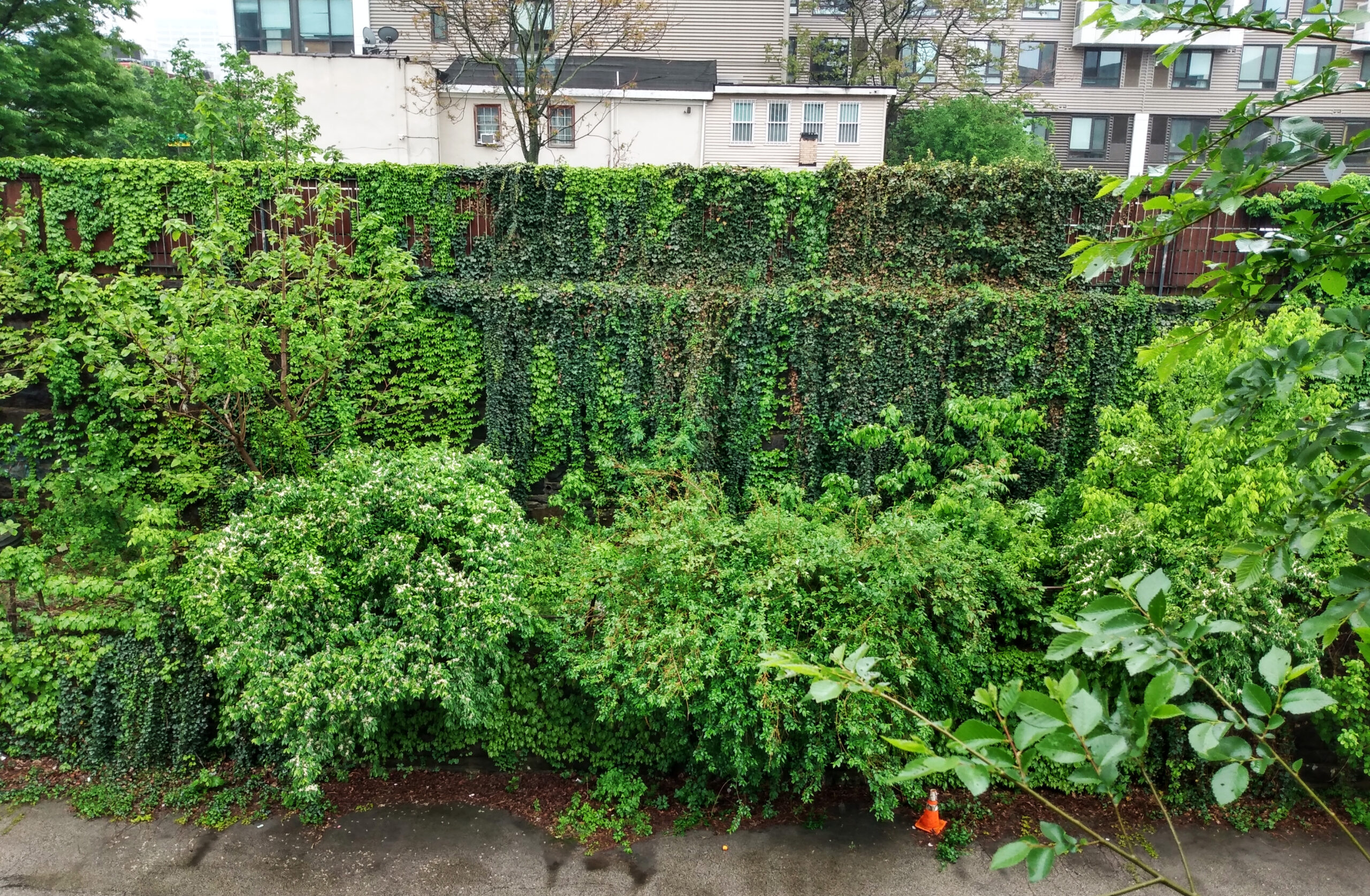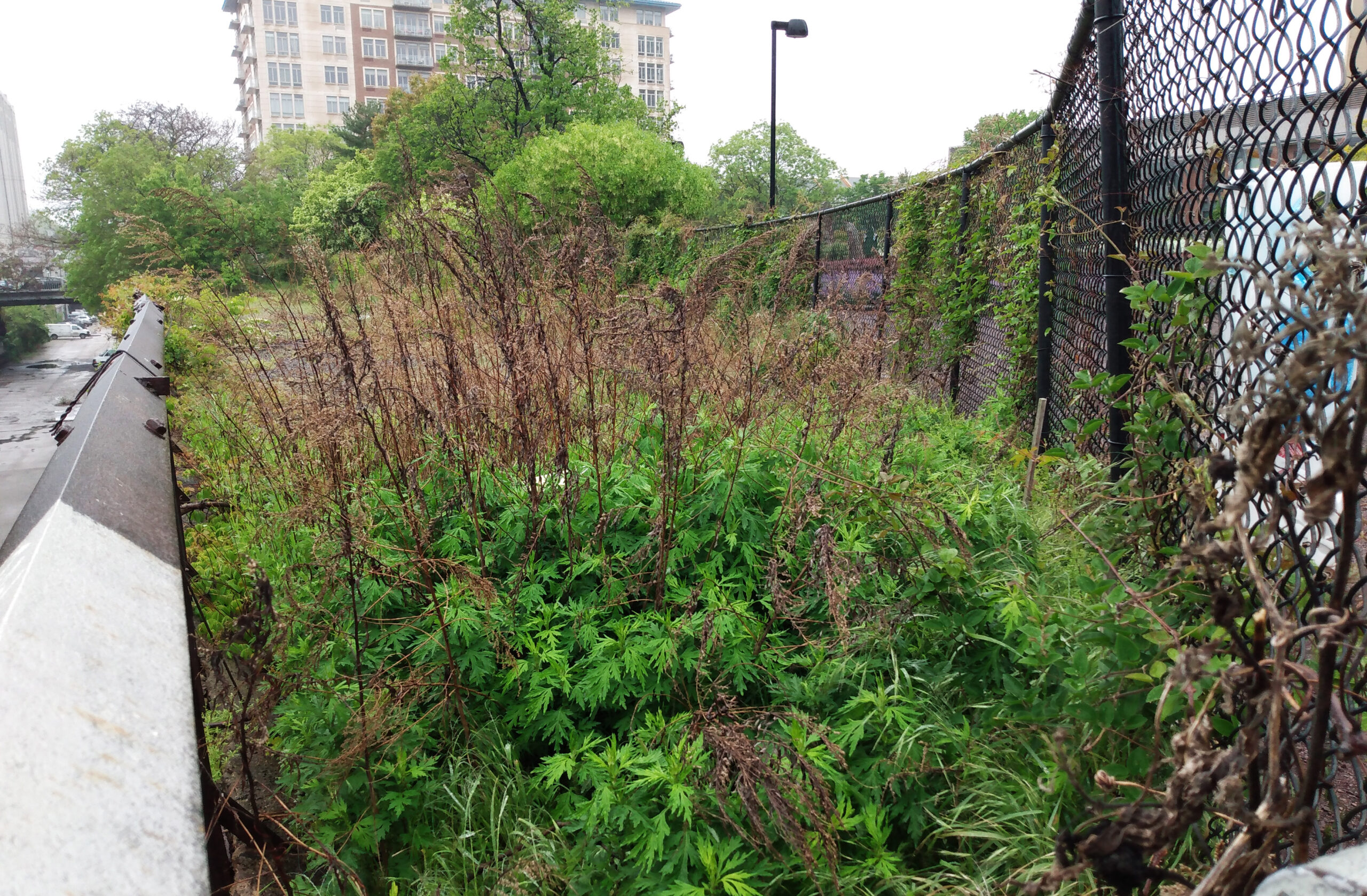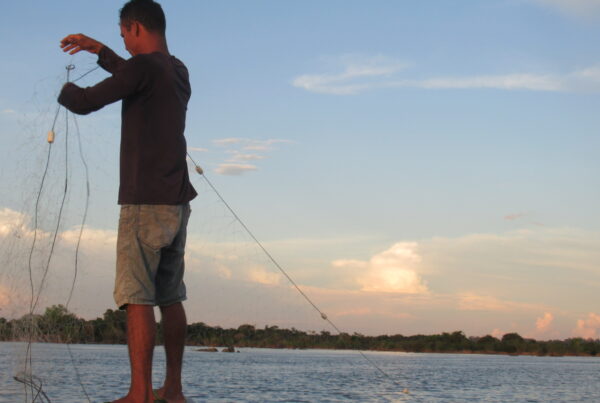By Elizabeth Newnam and Kimberley Thomas
Novel ecosystems reveal that traditional conservation paradigms are no longer appropriate for managing nonhuman nature. A better approach to management is convivial conservation, which embraces dynamic and novel instances of wildness that are inherently entangled with enduring human influences.
Novel ecosystems demand a new conservation model
The time has come for a new take on conservation. Traditional conservation has long focused on preserving and restoring the species composition of healthy ecosystems and recovering historical authenticity through efforts like eliminating exotic species. However, anthropogenic changes have upended traditional conservation paradigms, which advance an understanding of the world that now appears inaccurate and outdated. Widespread anthropogenic alterations to the biophysical environment make attempts to replicate past species compositions inappropriate. Efforts to preserve wilderness amid human dominance ignore long histories of human influence on wild places (Figure 1). To put it plainly, traditional conservationists seek a pristine nature isolated from humans that simply does not exist, and likely has not existed for millennia. Instead of focusing on historical configurations, contemporary conservation should value novel ecosystems, where wildness and human influence co-create space. This means protecting these spaces through adaptive governance, which copes with uncertainty and complexity in ecosystem management using an experimental, learning-driven approach. Convivial conservation could be one such strategy for managing novel ecosystems.
Novel ecosystems are new species configurations that arise due to anthropogenic environmental change, land conversion, species introductions, declines of keystone species, alteration of biogeochemical cycles, or climatic change that shifts species beyond their historical range. They can be created as exotic species are introduced into existing systems, as human dominated systems are abandoned and escape domestication to become wild, or through globalized flows of genetic materials, resources, goods, and people. They are a self-evolving response of the biosphere to human influence and activity, but they do not depend on humans for maintenance. In addition to new species combinations, novel ecosystems host new interactions of these combinations with abiotic factors such as soil hydrology. They manifest whenever nature reclaims an abandoned lot, building, agricultural plot, or other space previously dominated by human activity. None of the causes of novel ecosystems are new to the planet, yet the concept of novel ecosystems is challenging longstanding ideas on what defines a biological community and how this community might change over time.

Novel ecosystems where biodiversity and ecosystem services have been studied. Source: Global Ecology and Conservation.
Novel ecosystems are spread throughout the globe, currently occupying between 28% and 36% of the ice-free land surface, with evidence of their presence in many terrestrial areas (Figure 1). These novel ecosystems offer unbridled socio-ecological opportunities that would be missed through traditional conservation interventions meant only for species preservation. These opportunities include carbon sequestration, watershed protection, recreation, timber, non-timber forest products, and resources for local livelihoods. Native plant species may benefit as well. Ninety-nine percent of exotic arrivals are unproblematic, even supportive of native plant populations. Ecosystems with very large numbers of exotic species, such as urban gardens, are known to support stable levels of native species. Novel ecosystems frequently feature a higher species diversity than historical systems, contributing to increased resilience in the face of rapid environmental changes.
Traditional conservation and conservation of novel ecosystems differ in perspectives about which elements of nature should be valued, retained, and enhanced through policy and practice. Most contemporary conservation models originate from the Cartesian duality that separates humans from nature. This rationality grew to dominance under conditions of climatic stability, but the pressures of a new climate regime require a critical reimagining of our relationships with other species. The idea that human activities are disturbances to ecosystems reinforces a false binary perspective of humans and nature. Wilderness concepts perpetuate this human/nature dualism by dividing human activity from protected areas. The concept of novel ecosystems is thus unsettling for those subscribing to traditional conservation activities grounded in the nature/culture dualism. For instance, Carolina Murcia and colleagues argue that the novel ecosystem concept is an ill-defined theoretical construct fraught with risks.

A novel ecosystem takes root in an abandoned channel in Philadelphia, PA once slated for a recessed railway. Source: Elizabeth Newnam.
Novel ecosystem advocates value the evolutionary dynamism of natural processes such as competition and predation between species, both native and exotic. Richard Hobbes and colleagues argue that exotic species should be supported, not eliminated, through management frameworks. The dualisms of traditional conservation are disassembled through calls to move beyond outdated oppositions between exotic and native species and between those considered wild versus domesticated. This movement is inspired by paleoecological evidence indicating that many species considered native have been introduced by humans in previous centuries, and that some species may have been present in an area, only to become locally extinct, and then classified as exotic when they return. The novel ecosystem concept dissolves dualism in conservation discourse by re-conceiving spaces for nature that are new but natural, and anthropogenic but wild. Contemporary conservation demands a landscape vision wherein we accept nature that looks a little more lived-in than we are used to and working spaces that look a little wilder than we expect.
Novel ecosystems help reduce species extinctions. Conservation translocations are intentional reintroductions that move species from wild or captive stock back into their historical range. If their original habitat is extensively modified, placing these species outside of their natural distribution might be necessary to avoid extinction. The result is the creation of novelty in the translocation site. There are also occasions where avoiding the extinction of species means providing restoration at the ecosystem scale. One response is to move species in order to recreate recently lost ecosystem functions, replacing an extinct species that had a key ecosystem function with an exotic surrogate species called an analog. Successfully reintroduced analogs for extinct species include yellow-crowned night herons introduced to the Bermuda islands and tundra musk oxen introduced to the Siberian steppe. The introduction of analog species can be thought of as the deliberate creation of novel ecosystems which aid in the conservation of endangered species.
Convivial conservation as living together in novel ecosystems
“Convivial conservation” has been suggested as a methodology for living together with biodiversity and rejecting the false human/nature dualism. Convivial conservation means moving from protected to promoted areas (places where people are considered welcome visitors or dwellers rather than temporary invaders in a nonhuman landscape), from saving nature to celebrating it, from tourism to engaged visitation, from spectacular to everyday environmentalism, and from privatization to collective democratic engagement. Through this approach, conservation is integrated and re-embedded into daily life and all other domains of policy and action, rather than left as something we do only in protected areas. This can take many forms, such as leaving beaver dams in place or relinquishing lawns to diverse plants and animals. Humans and nonhumans live in and produce space together. However, implementing convivial conservation will always be political, subject to interests, needs, histories, and power dynamics. It will require identifying and studying economic and political impediments and opportunities related to human/nonhuman relationships in conservation spaces. Thus, a central focus of attention in convivial conservation is the needs and rights of nonhumans as subjects that shape conservation practice. This approach is consistent with numerous Indigenous traditions worldwide that dispute a nature-society duality and often regard nonhuman nature as kin. Convivial conservation of novel ecosystems thus has potential to support such marginalized groups by extending their recognition of all life as valuable.

A novel ecosystem establishes itself by cascading over a series of fences bordering an abandoned channel in Philadelphia, PA. Source: Elizabeth Newnam.
Confronting the challenges of novel ecosystems
While novel ecosystems present a spatial opportunity for a new convivial conservation approach, there is some concern that accepting novel ecosystems means giving in or giving up conservation. Novel ecosystems could be politically dangerous if they are used to justify environmental damage. Some fear that accepting them will promote the political support of ecosystem degradation under the guise of conservation or open the floodgates to human manipulation of species assemblages. Ecologists worry about irreversible biodiversity losses, uncontrolled species invasions, and focusing on ecosystem function at the expense of critical species. However, while conservationists should accept the reality of novel ecosystems, that doesn’t necessarily mean they must embrace all novel ecosystems. Instead, it is necessary in conservation to clarify which values and priorities are most important, and to understand novel ecosystems and their consequences. Affected communities must choose critically which novel ecosystems should be conserved. They must work within a framework of governance that ensures distributive justice given the opportunities that novel ecosystems afford. This entails, at a minimum, the equitable distribution of environmental harms, costs, and benefits associated with novel ecosystems, including urban beautification and access to resources.
Over time, novel ecosystems may become the new normal, and as such become representative of new values of wildness, or being undomesticated, that are distinct from traditional values of wilderness. Learning to appreciate novel ecosystems will take practice and perhaps some new approaches to valuing the pace and extent of their changes. Those willing to accept that certain ecological thresholds are likely to be irreversible are also more willing to recognize the benefits of novel ecosystems in management frameworks, while those who are unwilling to accept the possibility of irreversible thresholds may actively resist accepting novel ecosystems. The rapid change of novel ecosystems has placed conservation at this crossroads, making conservation choices increasingly difficult and complex. However, applying convivial conservation to the novel ecosystem concept could reshape the way we think about conservation, our interactions with nature, and the public dialogue about ecosystem management.

A diverse plant assemblage occupies a neglected railway in Philadelphia, PA. Source: Elizabeth Newnam.
Traditional conservation positions human and nonhuman nature as two constituents of a dualism, but in fact they are two heterogenous constellations of similarity and difference in an interwoven system that is characterized by ongoing interaction and change. It is no longer practical to impose dualistic conservation models onto novel spaces of human and non-human co-production of space. Novel ecosystems have moved beyond historical species compositions. A better model for novel ecosystems is convivial conservation which promotes and values human-nature intersections and accounts for the rights of nonhuman species. Given humanity’s limited understanding of complex systems, a convivial approach allows conservationists to avoid rigid stances, such as traditional conservation or the idea that embracing novel ecosystems means giving up. This approach can be paired with adaptive governance that uplifts nonhumans as subjects and uses a learning-driven approach to cope with uncertainty and complexity in ecosystem management. As our landscapes continue to evolve, we do not need to welcome every novel ecosystem. However, we ought to value novel ecosystems at large in our conservation practices and embrace them as dynamic and beneficial members of the world biological community.
—
Elizabeth Newnam is a PhD student at Temple University interested in urban nature, conservation, political ecology, and geographic methodologies including remote sensing.
Kimberley Thomas is an environmental social scientist and Assistant Professor at Temple University. She takes a political ecology approach to understanding the social, political, and economic drivers of vulnerability to environmental hazards in South and Southeast Asia.
—
Bibliography
Alexandra, Jason. “Designer Ecosystems for the Anthropocene—Deliberately Creating Novel Ecosystems in Cultural Landscapes.” Sustainability 14.7 (2022): 3952.
Büscher, Bram, and Robert Fletcher. The conservation revolution: radical ideas for saving nature beyond the Anthropocene. Verso Books, 2020.
Clement, Sarah, and Rachel J. Standish. “Novel ecosystems: Governance and conservation in the age of the Anthropocene.” Journal of environmental management 208 (2018): 36-45.
Curley, Andrew. “Resources is just another word for colonialism.” The Routledge handbook of critical resource geography. Routledge, 2021. 79-90.
Hobbs, Richard J., Eric S. Higgs, and Carol Hall. Novel ecosystems: intervening in the new ecological world order. John Wiley & Sons, 2013.
Holmes, George. “What do we talk about when we talk about biodiversity conservation in the Anthropocene?.” Environment and Society 6.1 (2015): 87-108.
Lennon, Mick. “Nature conservation in the Anthropocene: preservation, restoration and the challenge of novel ecosystems.” Planning Theory & Practice 16.2 (2015): 285-290.
Murcia, Carolina, et al. “A critique of the ‘novel ecosystem’concept.” Trends in ecology & evolution 29.10 (2014): 548-553.






